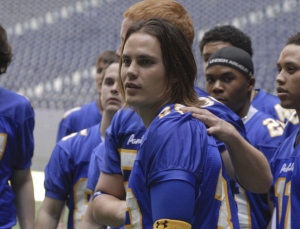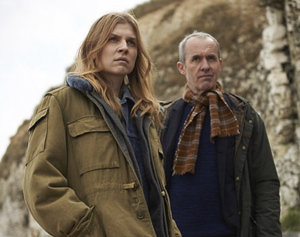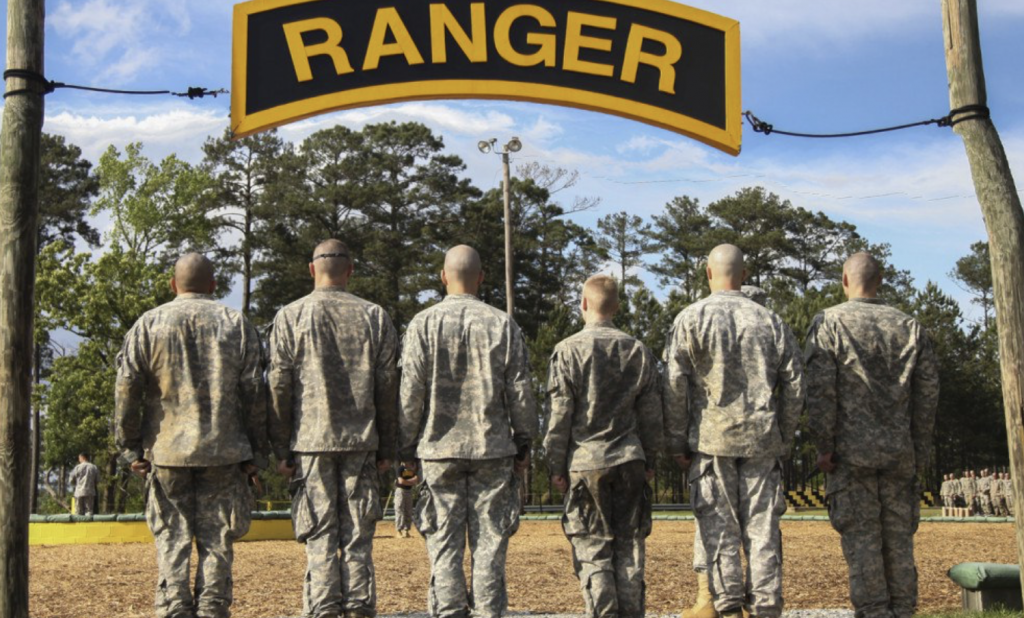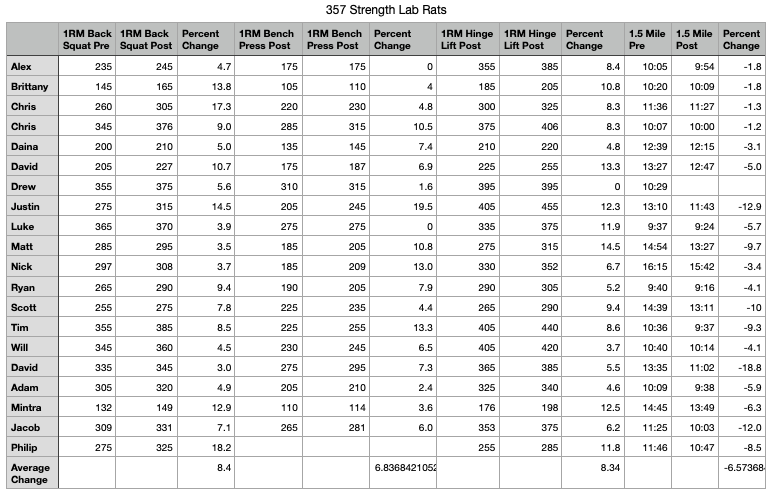QUESTION
I recently purchased the year long PJ/CCT packet while on deployment and have completed the on ramp portion and loved it and am a huge fan of your chassis integrity theory and style of training! I want to take a break from it though since I’m having hand surgery to remove some scar tissue in roughly 2 months and my timeline is looking like it’ll be about 18 months until I hit Phase II selection. Im active duty Air Force and wanna finish my degree before starting the long pipeline, but was wondering do you have any programs in the meantime before I return to the packet that focus heavy on endurance running and emphasize muscular endurance as those are weak areas of mine (I’m consistently high 13s to low 14s for my 2 mile run)? I still want to lift weights/improve work capacity so if there are even options to pair 2 separate programs I’m all for it. Only equipment I don’t have access too right now is a pool. Thanks for the help.
ANSWER
I’d recommend the plans/order in the
Virtue Packet. Two of these plans are in the PJ/CCT Packet – Valor and Humility.
– Rob
QUESTION
I’m reaching out because I spent the morning having a friend (she’s a firefighter, Laura Lyons) sign your praises.
I recently switched gears from doing crossfit 4-5x a week to American Kenpo and I’m having a lot of trouble balancing workouts with martial arts 3x a week. I’m upper 30s and not competitive outside of my own school.
Pushing weights like I used to means that my flexibility will be suffering and the martial arts training requires a lot from me including flexibility. I’ve been able to work running in on days where I do martial arts but that’s by not going 100%.
I’m fairly lost about how to work everything in. After two weeks of back and forth I was looking at weight training M Fr- martial arts Tu Th Sat, along with running and mobility work. Rest Wednesday and Sunday.
I would love your thoughts or if you have an idea of which of your programs would work for me.
Regards!
ANSWER
I’m not sure strength training alone, should hurt flexibility. It won’t hurt your martial arts performance – as long as it doesn’t impact fatigue … in other words making you sore or tired for your Kenpo training sessions.
The way you’ve got it set up seems right … don’t gym train on the days you have Kenpo training.
The Kenpo work is new, so your body is still accommodating to the stress. My guess is as you’re Kenpo fitness improves, your recovery will as well and you may eventually be able to double up on some days and gym train and do Kenpo on the same day.
Now, you may want to pull back on your running for your Kenpo days.
– Rob
QUESTION
I have a question about the theory behind your courses, particularly the Sapper/Ranger train-ups. Why do you prescribe such a light ruck weight? Just about everyone I’ve ever talked to who has been to and/or passed one of those schools says to ruck extra heavy during training to get used to the load. Like 80lbs minimum.
Is it because the other exercises in the plan are designed to build leg strength, and rucking with heavy weight in addition to those raises the risk of injury? I’ve read enough testimonials that I have confidence in your plans, but I am curious.
ANSWER
Our focus is to ensure the athletes can make it past the course gate PFT / Ruck, then prepare the athlete, but not break him down, for the duration of the course. Day 1 of the ranger school plan is a 12 mile ruck at 60#, which we understand is the load for the RAP week 12 mile ruck. The load for the Sapper Plan also reflects what we understand is the gate ruck load. The feedback we’ve received from the Sapper course has not indicated going heavier has not been needed … but we could have gotten in wrong and will fix if necessary. However, no one whose used the plan has reported this was an issue.
– Rob
QUESTION
I came to your site after listening to The Hunt Backcountry podcasts referencing your background, MTI and sandbag programming. My interests are mainly low elevation whitetail bowhunting…so I have been running 40 mpw for over a year but understand I need to incorporate more functional strength for backcountry bow elk at Colorado elevations.
So I am looking over your mountain programming and also wanted to know if the sandbags might be in stock anytime in the next 8 weeks? If not, would you have an alternative suggestion on the gear.
Thanks for your time and consideration.
ANSWER
The factory is currently building some more sandbags … but I don’t have a finish date on them. Any sandbag will do … and amazon has several different vendors who make these. You can also make your own … my first was an old duffle bag filled with gravel and sealed with duct tape. Be resourceful.
– Rob
QUESTION
I just wrapped up an intense 4-day-ice climbing trip, and once again, wanted to say thank you for the Expedition Ice Climbing program. I feel stronger than ever, and was able to solidly lead WI4 right out of the gates this season.
I have never been great about stretching and wanted to ask about what kinds of stretches should I be doing before I head into the mountains? What should I be doing after for recovery?
Does it make sense to do both static and dynamic stretches?
On the note of recovery, despite eating a fair amount during my trip, I am still pretty beat up today. What kind of diet should I be doing to aid in recovery?
Any other information or suggestions to help with the recovery process would be great.
ANSWER
The research we’ve reviewed, and what we’ve done in the gym, have found no correlation between stretching and performance, or recovery.
In terms of diet, eating clean as per our nutritional guidelines is all I’d recommend.
We’ve studied the effect on recovery shakes post-workout and found no benefit – which is one reason we don’t endorse any supplements.
That being said, some of my mountain athletes swear by yoga, massage, pilates, stretching, etc. Others prefer certain supplements. My answer to them is, “if it’s working for you, keep doing it.”
What we’ve found is recovery improves as fitness improves. What you feel from your trip is the effect of volume. It’s hard to replicate long mountain days in a gym-based session.
Understand, in today’s sports performance world, I’m an iconoclast when it comes to this stuff. It’s easy to find someone who’ll be happy to sell you the gizmo, routine, pill, shake, or bar claiming it will aid in your recovery.
My advice is to take a couple ibuprofen, eat a good meal, foam roll a little (cheap massage), and get some sleep.
– Rob
QUESTION
I just finished the rat 6 program and I was looking for something to follow it up with. Any recommendations?
ANSWER
Balanced, multi-modal plan. Maintain strength …. build work capacity, endurance and chassis integrity.
– Rob
QUESTION
I am looking to significantly increase my deadlift and overall body strength (more focused on the deadlift) , what plan would you recommend for significant deadlift improvement?
Thank you for supporting me through my progressions,
ANSWER
– Rob
QUESTION
Finishing up a backcountry ski program. All is good.
Looking to ski a lot this winter but also goof around a bit with working out.
A few others want to do a challenge / contest : most push ups / longest standard plank and a one-leg pistol squat. I have 45 days from Jan 1. We’re all mid-50’s and active. Sort of a most fit without running. Need to win. Ideas?
I’ve looked at your push-up plan and chassis integrity and thinking about combining them. Any other thoughts?
Know it’s not ‘standard’ but appreciate your ideas. I am on your athlete subscription plan.
ANSWER
Best to train sport-specifically for this assessment. Go to the FBI SA PFT Training Plan, do a push up and pistol squat assessment, and then follow the same progression.
Standard Plank? Go to the BJJ Training Plan and look at the Gi Grip Strength Assessment. It’s time based … do a max time plank and then follow the same progression that’s in the plan for the Gi Grip event.
You can do the progression for these together. I’d recommend 3-4 days/week, with a day rest each week. Re-assess every other week.
– Rob
QUESTION
Got a question regarding training. I am just coming off the entire run Improvement program so a good 5-6 months approximately of hard intervals, etc. I was wondering where to go to next I enjoy lifting and running and wasnt sure if I should drop into for example the 2 mile run improvement or lay off intervals for a bit? Fyi i have done big 3 and both run programs as well in the past. I have noticed in the past running is an area if I don’t keep up on i lose gains fairly quickly. Thanks for your input and keep getting after it!
ANSWER
You need to get under the barbell, and hit some work capacity and chassis integrity. I’d recommend
Johnny which is a multi-mode training plan. Double the prescribed running in the plan and add in a 60-90 minute moderate pace run Saturday to maintain your running fitness.
– Rob
QUESTION
1st question-I’m prepping to start your Denali program. It says for a Sled drag to use a tire. I have a Rogue steel sled. If I use that instead of a tire, how much weight should I stack on the sled?
2nd question- While prepping for the Denali program, I’d like to accomplish 2 things, build mountain endurance and cut some weight. I’m currently using the peak bagger program. Any thoughts on another mountain program that can help with both?
ANSWER
1) drag it unloaded. You’re going to be dragging it for miles.
– Rob
QUESTION
Starting week 8 on the 50k plan, and I have a few questions now.
1. The 7k intervals, starting with session 31. What is the desired or planned percentage of effort required to reach the target goals? For example, 90 %, or full out 100% run till you puke, and/or be able to run both intervals at close to the same time. ?
Maybe on the initial sessions the targets are unattainable, so you have the goal of reaching the target time by session 39 or so?
Obviously, by these questions you might surmise I’m not making my target times on those intervals. Max effort is leaving me as much as 3 minutes slow, weather and snow cover are affecting that, so I’m trying to adjust by running a percentage of effort.
2. The long runs – in my last 15 or 20 years of long distance running, the lore, or the culture, was to run long every other week to prevent fatigue and over training. The weekend runs on your plan are long, or moderate effort 30k each weekend. I can adapt, change, new stuff can be good, just curious as to the reasoning. Is it just for the distance training itself, or another goal to be gained as well? I am inserting extra rest days now, because I am definitely feeling tired and need some recoup. This is one of the reasons I left an extra 2 weeks to finish the plan before the actual race.
Ok, the disclaimers. I am, on a good day, just an average runner. I have never been able to train hard for more than 6 weeks, before needing to back off some, and at 58 years old, it’s not getting better. And, the long runs are being run on the “race course” which is a somewhat groomed dog sled and sno machine trail that is much harder on legs to run on even at an easy pace. The intervals are ran on snow on pavement, sometimes hard and packed, but mostly not. I’m sure your program was not meant for these conditions, but being able to adapt and make it happen is part of the fun.
Any insight or methodology, interm goals, etc. you had while making the program you could pass along would be helpful.
Thanks,
Letta
P.s. I really like the sandbag exercises. Never done any of those before, even after years of CrossFit etc. I had quite a time learning “getups”.
ANSWER
1. These times are based on your assessment result. They should be at a threshold effort (fast as possible), and most can make them. However, if your assessment was close to your genetic potential, and or you have a high training age for running, these will be very difficult. But regardless – run at threshold effort. These intervals train speed over ground. The plan is designed to prepare athletes to finish the event, as fast as possible.
2. I can’t speak to the way other coaches program. I will say that MTI programming is unique amongst all the categories we program for (tactical, mountain, endurance, etc.). The assessments and intervals in this program are certainly unique in ultra programming. However, the weekly volume build is steady and week 9 is an unload week before the highest volume week – 10. Week 11 and 12 are unloads into your event. The longest run in the plan is 38k, in prep for a 50k race.
You’re age is likely impacting your recovery and you will likely need extra recovery to adapt. I’m not sure the 38 year old Letta would need the extra time.
– Rob
QUESTION
I am looking for a plan to improve functional fitness and raw strength. My run times don’t need improvement but I don’t want to sacrifice too much of my run times if possible.
Currently my maxes are about
Bench – 235
Squat – 300
Deadlift – 315
1.5 – 8:50
Height – 5’10”
Weight – 165-170lbs
My shoulder strength and core/hip strength are my weak points and I’d like to see my lifting numbers go up.
I am in the Border Patrol.
Any advice on which plan would be best??
ANSWER
2 good options depending on how much you want to run …. the strength programming is the same in each plan.
QUESTION
Good morning – very happy MTI user here, having bought my first plan from you all almost 8 years ago and haven’t stopped since.
I am torn between a flat bench and adjustable bench upgrade for my garage gym.
I follow your program strictly, so I don’t sub (I trust you all!) movements. I’ve noticed that I’ve never done an incline bench during a MTI/SSD/MiA/MoA program and I assume likely will not, so I haven’t done an incline in years.
To that end, I was curious as to the methodology at not programing incline bench. It would help me justify a cheaper Rogue flat bench (as your equipment list recommends) as opposed to something like the Rep AB-5200, or GA$P the Rogue adjustable.
Thank you for all you do!
ANSWER
I do and have programmed incline bench press – but certainly not as often as regular bench press. Our benches aren’t adjustable, and when we do incline, we simply put one side up on a plyo box.
The problem with the adjustable benches – in addition to being more expensive – is they are so damn heavy. I like our system better.
QUESTION
I’m progressing through the dry land skiing and enjoying and seeing good progress. The next program I want to use is pre session alpine rock. The problem is my local climbing gym is closed due to Covid. Is there a way to adapt the program to just a fingerboard?
ANSWER
Not a good way – but a finger board would be better than nothing. I haven’t built a finger-board only training progression yet – from what we do have I’d recommend the
Hang Board Primary Position Complex. I’d recommend this 3 or 4x/week, and increase the work intervals to 10 seconds.
In addition, I’d recommend progressing hanging on the boards using the jugs for time – where you can move your hands as needed. Begin with 6 rounds of 60 seconds and increase, if possible, to 5 rounds of 120 seconds. So, you’ll grab on to the jugs and move around or dead hang, as necessary … to make the interval. I’d also recommend this 3-4x/week, after the Hang Board Primary Position Complex.
– Rob
QUESTION
Your programming is great and I’m looking forward to starting one. Having trouble figuring out where to get started though.
I’ve done CrossFit for about six years then switched over to a gym called line of departure in Charleston that loosely followed your programming.
I have low back issues which lead me switch over from CrossFit to the line of departure gym. Deadlifting just the barbell was giving me significant pain but now I can deadlift 275×10 w no pain. I credit most of my progress to your programming, thank you!
I still need to be careful w the low back and the new job I have requires driving for long periods. I’ve found lifting moderate weight for 10 to 20 reps is great for my back. I love the sandbag workouts and Turkish getups you all program.
I’m looking for a program to challenge me, keep low back healthy, increase strength and endurance.
ANSWER
Low back? 275×10 reps is no joke. You should be okay, but listen to your body and be smart.
– Rob
Subscribe to MTI's Newsletter - BETA















